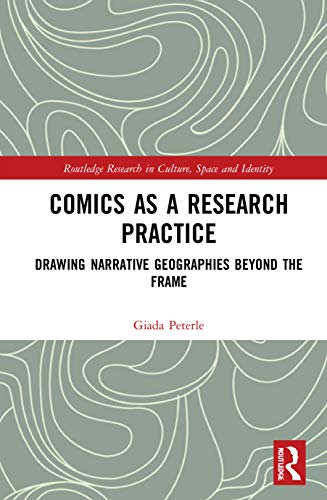

Most ebook files are in PDF format, so you can easily read them using various software such as Foxit Reader or directly on the Google Chrome browser.
Some ebook files are released by publishers in other formats such as .awz, .mobi, .epub, .fb2, etc. You may need to install specific software to read these formats on mobile/PC, such as Calibre.
Please read the tutorial at this link. https://ebooknice.com/page/post?id=faq
We offer FREE conversion to the popular formats you request; however, this may take some time. Therefore, right after payment, please email us, and we will try to provide the service as quickly as possible.
For some exceptional file formats or broken links (if any), please refrain from opening any disputes. Instead, email us first, and we will try to assist within a maximum of 6 hours.
EbookNice Team

Status:
Available4.4
22 reviewsThis book proposes a novel creative research practice in geography based on comics. It presents a transdisciplinary approach that uses a set of qualitative visual methods and extends from within the geohumanities across literary spatial studies, comics, urban studies, mobility studies, and beyond.
Written by a geographer-cartoonist, the book focuses on ‘narrative geographies’ and embraces a geocritical and relational approach to examine comic book geographies in pursuit of a growing interest in creative, art-based experimental methods in the geohumanities. It explores comics-based research through interconnections between art and geography and through theoretical and methodological contributions from scholars working in the fields of the social sciences, humanities, literary geographies, mobilities, comics, literary studies, and urban studies, as well as from visual artists, comics authors, and art practitioners. Comics are valuable objects of geographical interest because of their spatial grammar. They are also a language particularly suited to geographical analysis, and the ‘geoGraphic novel’ offers a practice of research that has the power to assemble and disassemble new spatial meanings. The book thus explores how the ‘geoGraphic novel’ as a verbo-visual genre allows the study of geographical issues, composes geocentred stories, engages wider and non-specialist audiences, promotes geo-artistic collaboration, and works as a narrative intervention in urban contexts.
Through a practice-based approach and the internal perspective of a geographer-cartoonist, the book provides examples of how geoGraphic fieldwork is conducted and offers analysis of the processes of ideation, composition, and dissemination of geoGraphic narratives.